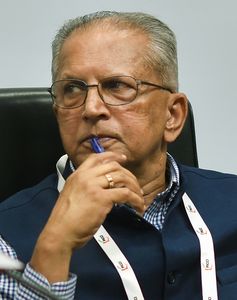IT IS A stalemate at the moment in Manipur. After mob violence claimed many innocent lives and displaced a huge population, the Meitei and Kuki-Zo communities have been living divided on ethnic lines for over a year. Clearly, there is a breakdown of trust.
The Central government says it will maintain Manipur’s territorial integrity, but it is a long journey ahead to bridge the ethnic divide. It is time the Central government took the initiative to start the process of reconciliation. It should have started it earlier, as the same party is in power at the Centre and state.
The appointment of an interlocutor, who enjoys the confidence of people on both sides, can set the ball rolling. Compensation, rehabilitation, rebuilding of houses and involvement of local communities to help the displaced people go back to their homes are some of the steps that need to be taken first.
The Union home ministry can create a reconciliation commission, with a two- or three-member team to travel to the affected areas and begin the process of outreach, start understanding the sentiments and the demands, and find ways to bridge the division of hearts.
The people of Manipur, especially the Meiteis, often find themselves being reminded of the alleged forced accession by the maharaja in 1949 when they already had an assembly and a constitution. Then there are comparisons with neighbouring Nagaland hill district getting statehood in 1963 while Manipur got statehood only in 1972. The Naga insurgency threat is looming large even today, with the demand for a greater Nagalim, including hill districts of Manipur.
Issues like reservation and land rights for the tribals served vested interests to exploit these sentiments which led to the May 2023 violence and resulted in the complete partition and loss of trust between the two sides.
There has been a demonisation of the hill people. This political rhetoric has to be toned down to pave the way for reconciliation. One of the confidence building measures would be to replace the chief minister, which would send the message that the Centre is making a positive outreach. Once that happens and the blame game is replaced by a more balanced narrative, the government can look at short-term and long-term steps.
To restore law and order, the government must seize all arms and ammunition looted from police armoury and floating around, mostly in the valley. I feel this can be done within a few days, as weapons are openly being held and used. Once the weapons are collected, the authority of the state needs to be restored, by inducting additional paramilitary forces if required.
The next step should be dismantling the ethnic boundaries that were drawn (between the hills and the valley by creating so called buffer zones). Going hand in hand with the reconciliatory process, the government should be able to explain to the people that safety of citizens is foremost but artificial boundaries need to go.
Manipur is the gateway to Myanmar, South East Asia and China. The cross-border threats are mounting here, with drug smuggling rampant. As Myanmar remains disturbed, these smuggling hubs will shift to the Indian side along with Myanmar militant groups. Already, there is evidence of involvement from the Indian side and if the Manipur conflict is allowed to fester, the state will fall prey to bigger threats. China is already engaging the Indian Army on the northern frontier in Ladakh, and the opening of another front on the Myanmar border will mean another distraction.
―Pillai is a former Union home secretary.
As told to Namrata Biji Ahuja



